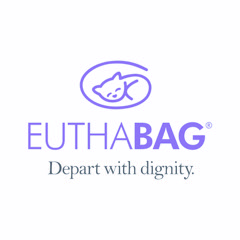“If confusion is the first step to knowledge, I must be a genius.” ~ Larry Leisner
To say controlled substance management is confusing is an understatement for most of us. Just when we think we’ve got it down, a conversation with a colleague can get us thinking we’ve dropped the ball on best practices. The Drug Enforcement Agency (DEA) and state regulatory agencies have worked diligently to bring forth regulations for practitioners to abide by, and there are many. Every veterinary team should have an expert in controlled substance management on their side to stay current and keep everyone in compliance.
In 2014, Congress passed the Veterinary Mobile Practice Act allowing veterinarians to carry controlled substances into the field; more than may be required for the day’s work. This was a huge victory for the mobile industry. Veterinarians can now bring full bottles of drug with them on housecalls, which for mobile euthanasia practitioners, is vital to their success. One never knows if they will need more drugs for a patient than anticipates or another client calls needing immediate help. In reading the law, you will note it allows veterinarians to move drugs outside of a DEA registered location; no mention of veterinary technicians.
To learn more about the nuances of utilizing veterinary technicians in mobile euthanasia services, the Companion Animal Euthanasia Training Academy (CAETA) consulted with Jack Teitelman of Titan Group. Jack has more than three decades of continuous leadership expertise in government, security, law enforcement and private industry. Titan Group has a special interest in protecting veterinary medicine. Some of their insights are being shared to bring a bit of clarity to an often confusing part of our work.
Here are some Frequently Asked Questions to CAETA regarding the utilization of licensed veterinary technicians for mobile euthanasia. Please note all DEA agents reserve the right to question the transport of controlled substances, even in emergency situations, and that the veterinarian holding the DEA license is liable for any non-compliant behavior, be it at the federal or state level. Note the complexities of proper drug intake, storage, and disposal go well beyond the scope of this article.
- What schedule(s) of drugs are licensed (LVT) or registered (RVT) veterinary technicians allowed to transport out of a DEA-registered location?
The first part of this answer is to note the DEA does not like veterinary technicians transporting any controlled drugs; Schedule I-V. This being said, they can transport any level of scheduled drugs at the DIRECT request of a veterinarian if allowed by the state. For the purposes of euthanasia, the veterinarian may permit the transport euthanasia solution, including Schedule II pure pentobarbital. If questioned by a DEA agent as to the necessity of this, a clear indication of patient suffering should be documented. Veterinary technicians should not be transporting drugs across state lines into states where they do not hold licensure, regardless if their veterinarian asks them to. Some states such as California require technicians to hold a controlled substances permit if working with these types of drugs [euthanasia] in any manner. - What is the difference between State Rules and DEA Rules?
Each state will have specific rules governing mobile veterinary medicine and the use of veterinary technicians. What we know for sure is DEA regulations are nationwide, therefore if a veterinarian can justify the need for the veterinary technician to transport controlled drugs out of the office and into the field, the DEA should be satisfied. However, if the state does not allow the technician to transport drugs, that’s a different matter. All hospitals/services need to be familiar with what’s allowed in their state (and neighboring if applicable). If a veterinarian wants to allow a technician to perform euthanasia in a neighboring state, the veterinarian first needs to be licensed to practice medicine there. The technician will either need to transport drugs across state lines OR the veterinarian needs to have an established DEA-registered location in that state for the technician to obtain the drugs. - What special steps do technicians need to take to transport controlled substances?
Technicians need to be witnessed removing drugs from the safe. This can be done by another staffer or via a camera. They should also have a written account of how much drug is in their possession during the transport. After proper logging, drugs should be placed in a substantially constructed safe, hidden out of view in the vehicle (trunk, under seat) as much as possible, and with what’s referred to as multiple entry. The glove box is not acceptable as a ‘safe’. For short term transport, the drugs may be simply laid in the medical bag before use and the drugs may be brought in the presence of clients. If the drug is going to be left unattended for any period of time in the vehicle, it should be hidden and quickly returned to the DEA-registered site soon as possible. And technicians should only carry the bare minimum to effectively perform euthanasia. It is not ideal to have them moving around with copious amounts of drug. Different classes of drugs may be kept within the same safe for transport. When finished with the appointment, the drugs must be reentered into the main drug safe. Technicians cannot hold the drugs at their home locations unless fully designated as a DEA holding site. - What can veterinarians do to protect technicians in the field? Veterinarians should provide written proof of drug transport approval. This can be kept in the drug safe and available to show authorities if demanded. And drug oversight is key. Veterinarians should insist on what the DEA refers to as ‘readily retrievable files’, meaning all drug logs are current and ready to show DEA agents in the event of an inspection. Veterinarians should also ensure that sending technicians into the field is warranted. DEA agents reserve the right to dispute the necessity of transporting drugs. The veterinarian must keep valid medical records on all patients justifying the need for emergent mobile care. In states where direct supervision of technicians by veterinarians is required to facilitate euthanasia, telemedicine may apply. This means the virtual presence of the veterinarian in the appointment, approving and monitoring the situation, should please DEA agents and state representatives reviewing the case.
- How should veterinarians protect themselves when allowing techs to transport? Background checks should be done on all technicians who will be authorized to transport controlled drugs. Whenever possible, lower scheduled drugs should be used. Vets must ensure very strict drug handling procedures are in place that align with DEA requirements. These should be adhered to everytime drug is moved out of the safe and into the field, and when checked back in. If it becomes difficult to manage such transport, a veterinarian may set up multiple registered locations, such as the home of their veterinary technicians.
As the requests for home euthanasia increase across the US, it stands to reason the veterinary profession should draw upon one of our most trusted resources, veterinary technicians. Until such time when technicians are fully included in the Veterinary Mobile Practice Act, perhaps states requiring advanced training and permits could meet the needs of the DEA and state legislation. For now, the decision to send a technician into the field mandates strict adherence to policies and veterinarian oversight to safeguard the drugs under their name.
The DEA is a federal agency and responsible for the DEA registrant’s oversight. The DEA has not granted any authority for veterinary technicians to move controlled substances out of the registered location to perform euthanasia. The state veterinary board is the only one who can determine if veterinary technicians will be allowed to perform euthanasia in the state of residence. If the DEA-registered veterinarian wishes to allow a technician to perform euthanasia, this should be received in writing prior to performing any medical procedures. In other words, if a veterinary team plans to utilize technicians to perform mobile euthanasia, it is advised to obtain a written letter of approval from your state veterinary board, especially if the State Euthanasia Laws or governance documents leave too much room for interpretation. Federal law only pertains to the movement of a veterinarian’s controlled substances outside the registered location. If there is an issue with a technician and “unsupervised” use of a controlled substance outside of the DEA registered location, this will be a major issue for the veterinarian and not the technician. Everyone is advised to become informed and safeguard adherence to the rules.
To learn more about companion animal euthanasia, contact the Companion Animal Euthanasia Training Academy (caetainternational.com). To learn more about DEA compliance in veterinary medicine, contact Titan Group (titangroupdea.com).





